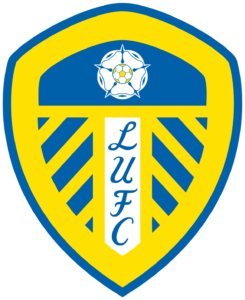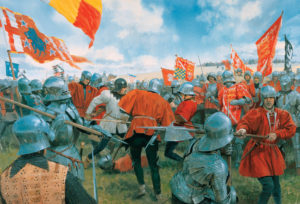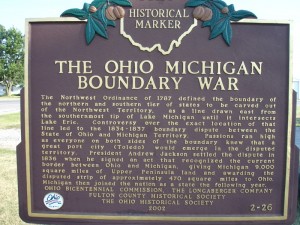Wednesday night brings the next edition of the famed Roses Rivalry, as Leeds United visits Manchester United. The two sides will met again, four days later, for the Premier League reverse fixture.
There are many derbies in England, but this is one fierce rivalry (which is also sometimes referred to as the Pennines Derby) that is unlike any other, because it works on levels that go far beyond just the clubs involved. The acrimony is actually loosely rooted in the historical clashing between the entire Northern England counties of Lancashire and Yorkshire.
Manchester United at Leeds United FYIs
Kickoff: Wednesday, February 8, 8pm, Old Trafford
PL Position: Manchester United 3rd, 42 points Leeds United 17th, 18 points
Transatlantic Passage: How the Premier League Redefined Soccer in America: LINK
Team News for Both Sides: go here
Man United Starting XI Prediction: go here
PL Form: Manchester United WLDWW Leeds United LDLDD
Odds: Manchester United 64%, Leeds United 16%, Draw 20%
And the Lancashire-Yorkshire feud is, at least on some level, one with origins within the 15th century Wars of the Roses. Let’s take a look at all this, and see where we’ve been, so that we also know where we’re going.
The Wars of the Roses, were a series of civil wars waged between two rival cadet branches of the house of Plantagenet (a royal dynasty): York and Lancaster.
They went to war over, what else, but the very throne of England, over the span of 1455-1487.
The wars, which had roots in the infamous Hundred Years War, were especially bloody, with the Battle of Towton, staged only 15 miles (24 km) away from Leeds, described by some historians as “England’s bloodiest ever battle”.
It is estimated that over 105,000 perished in this war, won by Lancaster, who were allied with the House of Tudor. They also had France, Scotland and Wales on their side, among others.
Meanwhile York had Ireland, Brittany and Burgundy as among their allies.
In the end, it was the Tudor family that assumed the throne. After the Wars of the Roses, the two Plantagenet factions came together, but bad blood between the two counties lived on.
These days, the colors of the roses live on in each team’s home kit.
Leeds is white, like the Yorkshire rose (which is visible in the team crest/badge) while United is red, matching the Lancashire rose.
However, it is worth noting that United’s original colors, when they were founded with the name Newton Heath Lancashire Yorkshire Railway Football Club (well there is a spirit of unity, huh?) in 1878 were green and gold.
Also, Leeds didn’t go white until the 1960s, and that was only because they drew inspiration from Real Madrid. When hooliganism was at its worst, in the 1970s, we saw some nasty clashes between some supporter groups of each respective club.
There was much fisticuffs, melees, brawls and brouhahas.
The Roses Rivalry was also once designated by The Daily Telegraph as “English football’s most intense – and inexplicable – rivalry.” And this week brings a new twist. The two sides have never staged both of their league fixtures versus each other in the same week!
But weird scheduling, plus crazy rescheduling is what happens in a year where you have an unprecedented mid-season World Cup, plus the long-reigning monarch dies, forcing games to be postponed.
How’s that for a blood feud backstory?
This type of thing is actually quite rare in sports, although it is far from only example.
Two American college sports rivalries come to mind immediately. Kansas-Missouri, as those states clashed over slavery (the infamous “Bleeding Kansas” incident) in the 1850s.
Ohio State-Michigan can claim similar provenance, as they have the infamous War of the Toledo Strip, which was ended with the remarkable Frostbitten Convention.
And I think we all remember how that turned out!
Paul M. Banks is the owner/manager of The Sports Bank. He’s also the author of “Transatlantic Passage: How the English Premier League Redefined Soccer in America,” and “No, I Can’t Get You Free Tickets: Lessons Learned From a Life in the Sports Media Industry.”
He’s written for numerous publications, including the New York Daily News, Sports Illustrated and the Chicago Tribune. He regularly appears on NTD News and WGN News Now. Follow the website on Twitter and Instagram.








